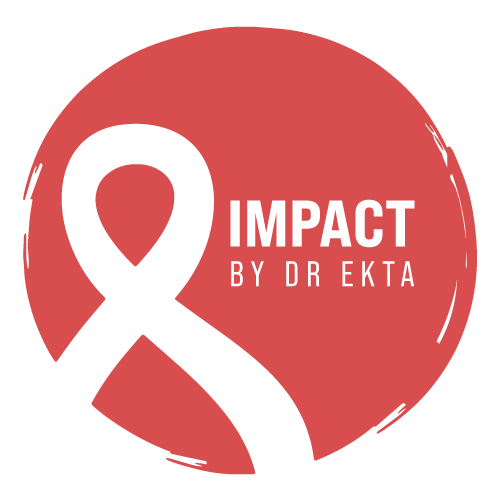When people think about the harmful effects of tobacco, cigarettes often come to mind. However, chewing tobacco is no less dangerous. Despite not producing smoke, it carries a serious threat to your health including the risk of various cancers. This blog explores whether chewing tobacco causes cancer, how it affects the body, early warning signs to be aware of, and what steps you can take to protect yourself or someone you care about. The aim is to help you make informed decisions about tobacco use and its impact on health.
What Is Chewing Tobacco?
Chewing tobacco, also known as smokeless tobacco, is consumed by placing a wad of tobacco between the cheek and gum, where nicotine is absorbed through the mouth lining. Unlike cigarettes, it does not require burning or inhaling smoke, which leads some people to wrongly believe it is a safer option. This is far from the truth.
Types of chewing tobacco include
- Loose-leaf: shredded tobacco pieces, often flavored
- Plug: blocks of tobacco pressed into a brick shape
- Twist: rope-like strands of tobacco twisted together
- Snuff: finely ground tobacco, either dry or moist
Even though chewing tobacco users avoid smoke inhalation, they are still exposed to nicotine, heavy metals, and dozens of known carcinogens, particularly tobacco-specific nitrosamines (TSNAs). These chemicals are harmful and known to directly damage DNA, leading to abnormal cell growth and cancer development.
Does Chewing Tobacco Cause Cancer?
Yes, chewing tobacco is a proven cause of several types of cancer. Long-term use is directly linked to increased cancer risk in the areas where the product is used and beyond.
Cancers associated with chewing tobacco include:
- Oral cancer: cancer of the lips, tongue, cheeks, gums, and floor of the mouth
- Esophageal cancer: affects the food pipe connecting your throat to the stomach
- Pancreatic cancer: develops in the pancreas and is often detected late
- Throat cancer: occurs in the pharynx and larynx
- Bladder cancer: caused by the body processing harmful chemicals from tobacco
Chewing tobacco users often develop pre-cancerous lesions called leukoplakia, white patches inside the mouth which may turn into cancer over time if not monitored or treated.
What Are the Early Warning Signs?
One of the biggest dangers of chewing tobacco is that cancer may develop silently in the early stages. This makes it essential for users to recognize subtle but persistent symptoms. Being aware of these signs can lead to early diagnosis and more effective treatment.
Early signs and symptoms to watch for include:
- Sores inside the mouth that don’t heal
- Red or white patches along the gum or cheek lining
- Lumps or thickening in the cheek or jaw
- Persistent sore throat or hoarseness
- Difficulty swallowing or chewing
- Constant bad breath or change in taste
- Unexplained ear pain
- Numbness in parts of the face or tongue
If any of these signs last more than two weeks, it’s important to seek a medical evaluation—even if they appear mild or painless.
Other Health Effects of Chewing Tobacco
Beyond cancer, chewing tobacco is responsible for several serious health problems that affect multiple systems in the body. While cancer risk remains the most well-known concern, other health issues should not be overlooked.
Key health risks include:
- Dental damage: Tooth decay, stained teeth, receding gums, and tooth loss
- Gum disease: Inflammation and infection of the tissues supporting the teeth
- Nicotine addiction: Strong chemical dependency that’s hard to break
- Heart disease: Increased blood pressure and higher risk of heart attacks
- Reproductive problems: Reduced sperm count in men and pregnancy complications in women
- Social and psychological impact: Habitual use often leads to withdrawal, irritability, and isolation
It’s also worth noting that children and teens who start using chewing tobacco are more likely to transition into cigarette smoking later, deepening long-term health risks.
Who Is Most at Risk?
While anyone who uses smokeless tobacco is at risk, certain groups are more vulnerable to developing complications. These include:
- Long-term users, especially those who started young
- Individuals with a family history of cancer
- People with poor oral hygiene
- Users of multiple forms of tobacco or alcohol
- Those who avoid regular dental checkups
The risk is cumulative meaning the longer and more frequently you use chewing tobacco, the greater your chances of developing life-threatening diseases.
Cultural Use and Misconceptions
In many countries, especially in South Asia and parts of rural America, chewing tobacco is culturally accepted and often seen as a stress reliever, digestive aid, or even a symbol of masculinity. This cultural normalization makes it harder to combat its usage. Myths such as “it’s safer than smoking” or “it helps with digestion” continue to persist. In reality, these beliefs only add to the long-term health burden by delaying awareness and action.
Why Is It So Addictive?
Chewing tobacco contains high doses of nicotine, a highly addictive chemical that affects brain chemistry. Users often report a feeling of relaxation, increased alertness, or mood elevation. However, this short-term high comes at a long-term cost. Over time, the body craves nicotine to function normally, leading to withdrawal symptoms like irritability, anxiety, headaches, and restlessness when trying to quit.
Addiction makes quitting more difficult, and many users often relapse. Understanding this cycle is the first step toward breaking it.
Quitting Chewing Tobacco: Where to Start
Although quitting chewing tobacco is tough, it’s not impossible. With the right resources and support, individuals can stop using tobacco and significantly improve their long-term health.
Effective strategies include:
- Behavioral therapy: Cognitive techniques to manage cravings and triggers
- Nicotine replacement therapy (NRT): Using patches, gums, or lozenges to ease withdrawal
- Support groups and helplines: Connecting with others who are quitting
- Prescription medications: Such as bupropion or varenicline to reduce nicotine dependence
- Routine dental and medical checkups: To monitor oral health and detect any warning signs early
It’s important to approach quitting with a well-structured plan and realistic expectations. Many people make several attempts before they successfully quit. Every step counts.
Public Health Perspective and Awareness Campaigns
Health organizations globally have been working to spread awareness about the risks of chewing tobacco through events like World No Tobacco Day and anti-tobacco programs in schools and colleges. Campaigns focus on educating people about the cancer risk, encouraging early screenings, and creating tobacco-free environments.
Governments in some regions have also mandated graphic warnings on packaging, banned advertisements, and regulated the sale of flavored products to minors. While progress is being made, ongoing efforts are needed to combat tobacco addiction and improve public health outcomes.
Final Thoughts
To answer the central question, will chewing tobacco cause cancer? The evidence overwhelmingly says yes. It not only causes oral cancer but is also linked to several other life-threatening conditions. The perceived safety of smokeless tobacco is a dangerous myth. No form of tobacco is safe. Being informed about the dangers, recognizing early symptoms, and taking proactive steps toward quitting are crucial for reducing cancer risk and protecting long-term health. If you or someone you know uses chewing tobacco, now is the time to talk to a healthcare professional, seek support, and commit to quitting. Cancer prevention starts with knowledge and action. You have the power to choose a healthier, tobacco-free life.

